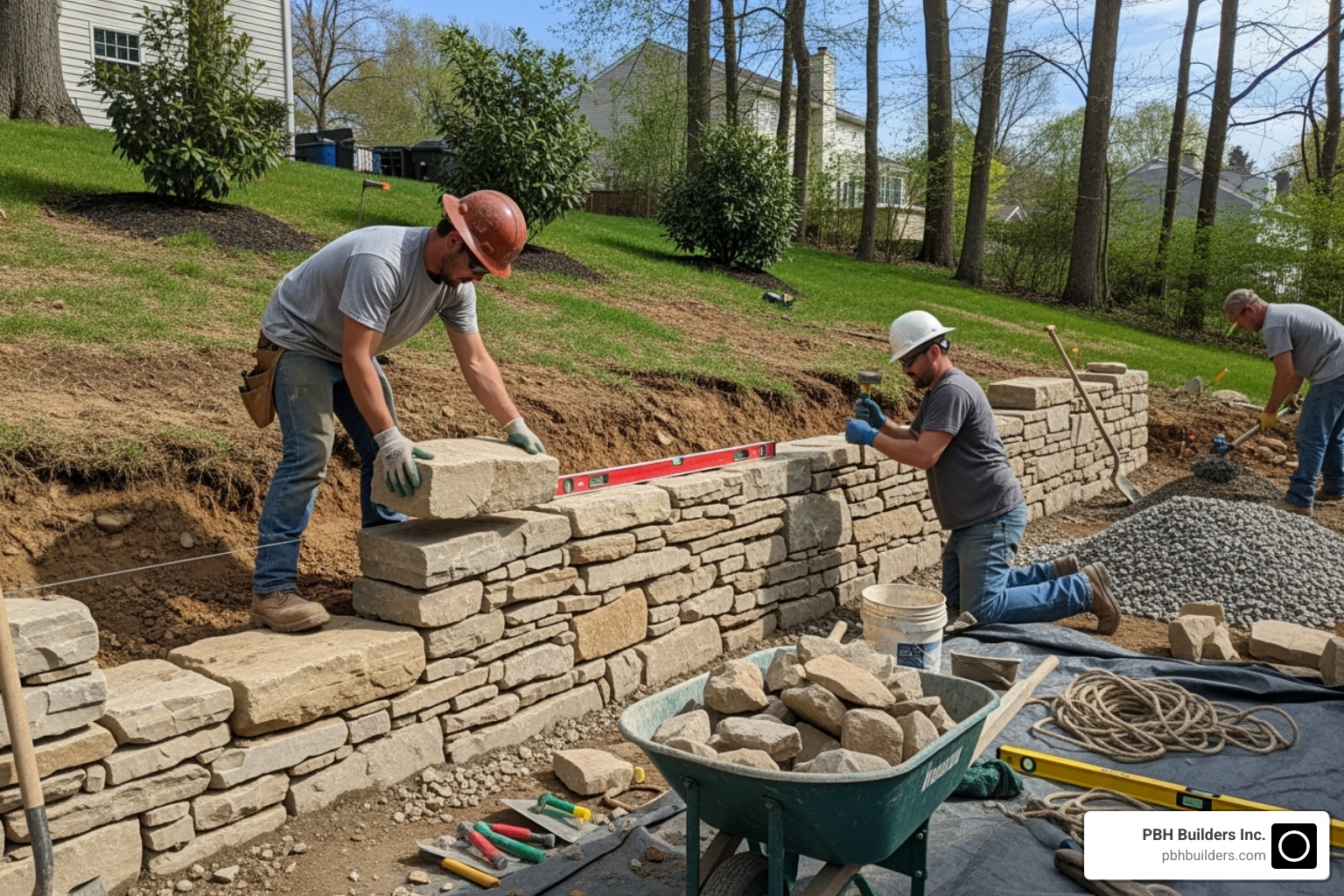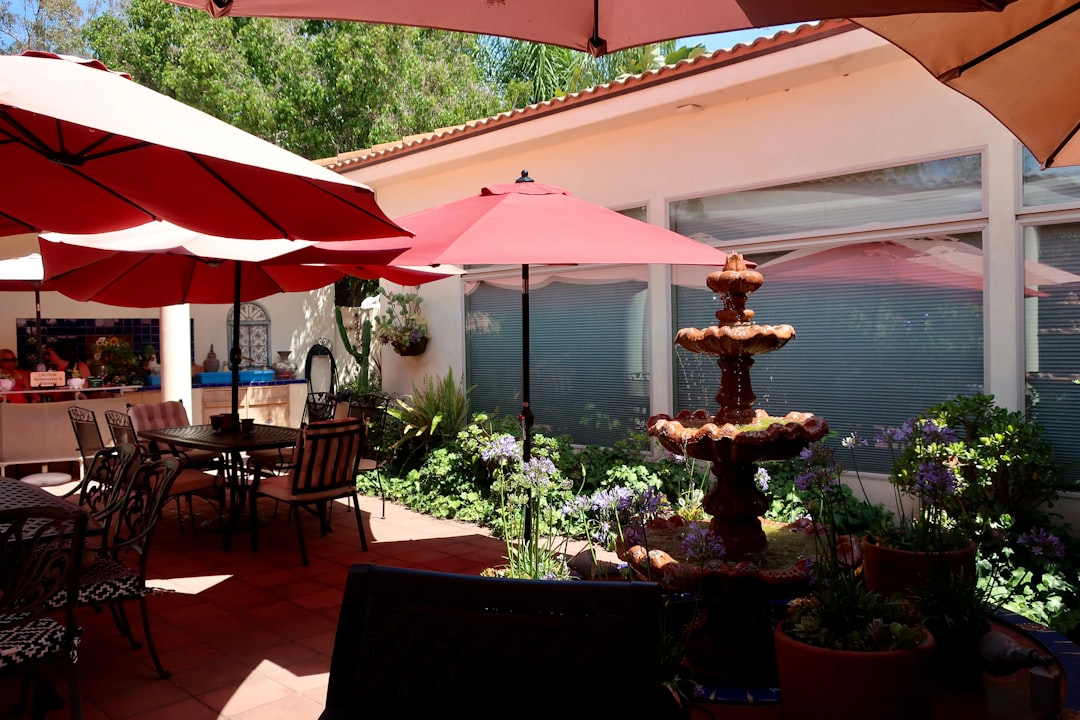Why Professional Installation Makes All the Difference
Retaining wall installers transform sloped San Diego properties into functional outdoor spaces while protecting your home from soil erosion and water damage. These specialized contractors handle everything from initial design to final installation, ensuring your wall meets both structural and aesthetic requirements.
Quick Guide to Finding Retaining Wall Installers:
- Check licensing and insurance – Verify contractor credentials through California’s licensing board
- Review local experience – Look for San Diego-specific project portfolios
- Get detailed written estimates – Compare costs, labor, and timelines from multiple contractors
- Verify specialty certifications – Seek contractors with manufacturer certifications like Belgard Preferred status
- Inspect past projects – Visit completed installations to assess workmanship
Whether you’re dealing with a steep slope, erosion, or want to create terraced gardens, the right installer makes the difference between a wall that lasts decades and one that fails. According to industry data, stone retaining walls can last anywhere from 50 to 200 years with proper design and construction by experienced professionals who understand soil conditions, drainage, and local building codes.
The installation process involves more than stacking blocks. Professional contractors assess soil, design proper drainage, install reinforcement materials like geogrid, and ensure compliance with San Diego’s regulations.
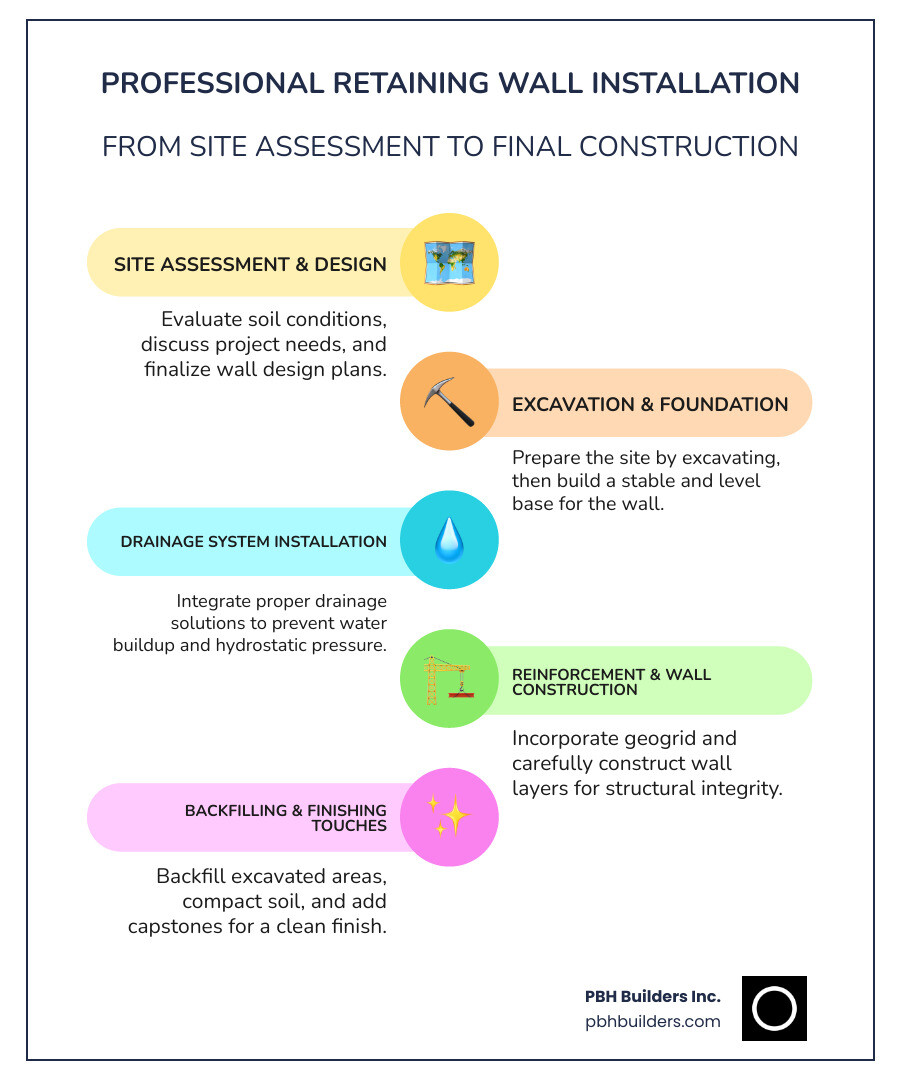
Why Your Landscape Needs a Retaining Wall
Do you watch your topsoil wash away in San Diego’s rain, or wish you could use that steep slope in your backyard? Retaining walls are the solution.
Retaining wall installers know these structures do more than hold back dirt; they are landscape game-changers.
A well-built retaining wall provides crucial erosion control and soil stabilization. It keeps your soil in your yard during storms, protecting your foundation, especially on sloped properties where erosion can be a major threat.
Retaining walls also excel at creating usable space. A steep, awkward slope can be transformed into terraced gardens, flat areas for outdoor dining, or a play zone for kids.
Water runoff management is another key benefit. Retaining walls direct rainwater safely away from your home and other structures, preventing pooling and potential damage.
The aesthetic appeal is significant. Walls add depth and visual interest, creating “outdoor rooms” that can separate a meditation garden from a play area or provide built-in seating around a fire pit.
Finally, a professionally installed retaining wall can lead to increased property value. It signals to buyers that the property has been thoughtfully maintained, making it an investment in both daily enjoyment and long-term equity.
At PBH Builders Inc., our Landscape Design Services often incorporate retaining walls to solve these exact challenges, turning a landscape frustration into a favorite feature.
A Foundation of Choices: Retaining Wall Types and Materials
Choosing a retaining wall material impacts its appearance, longevity, and maintenance needs. When retaining wall installers help you choose, they consider key factors for your project. Aesthetics are vital—should the wall match a modern home or a rustic garden?
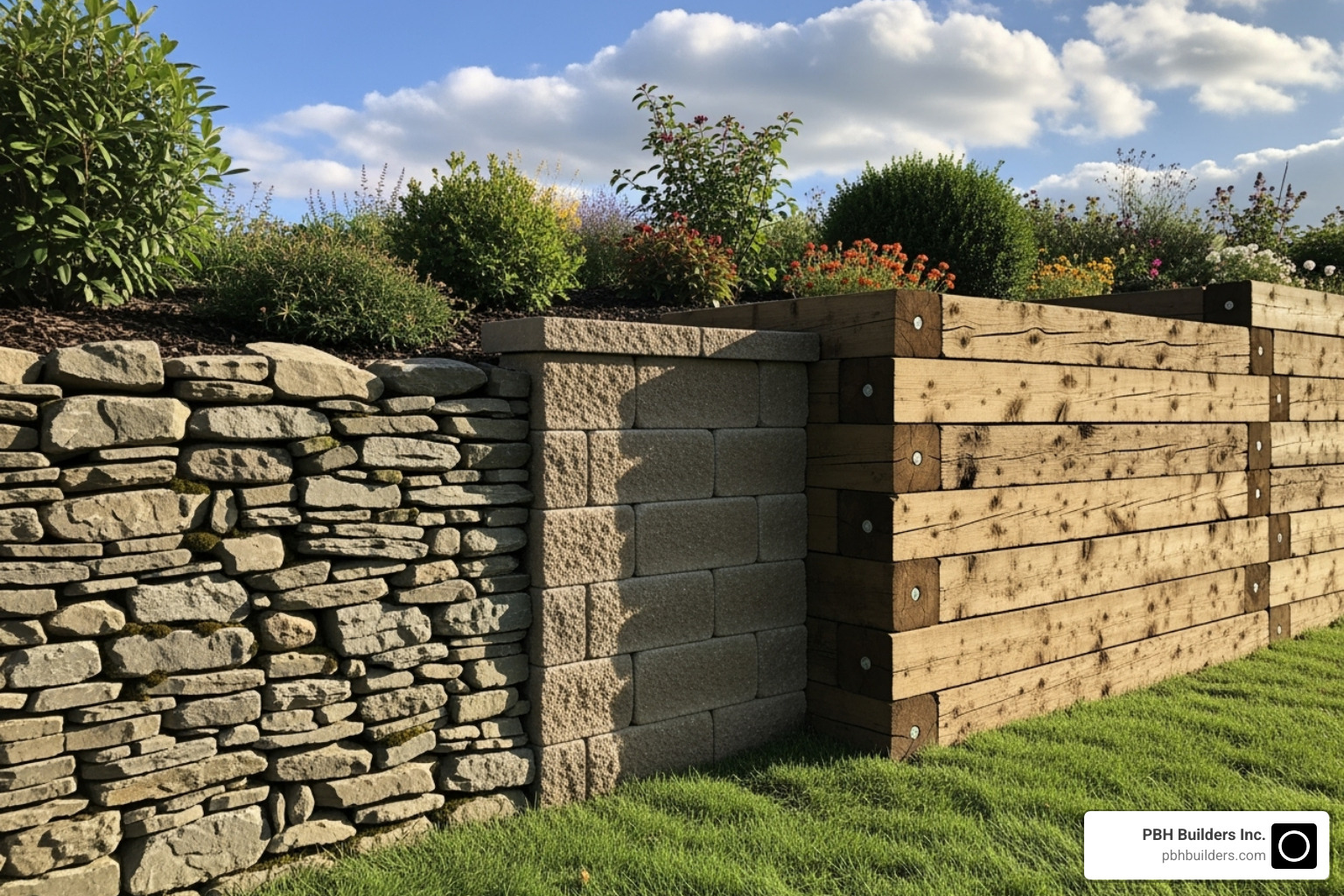
Durability is equally important in San Diego’s climate. Some materials last for decades, while others may need replacing sooner. Budget considerations extend beyond upfront cost to include maintenance requirements. A cheaper wood wall might require annual sealing and eventual replacement, making a pricier stone wall a better long-term value.
Your wall’s structural needs also influence material choice. Taller walls require stronger materials and engineered designs to comply with San Diego’s building codes and height restrictions.
Common Retaining Wall Materials
Concrete blocks are a popular, versatile choice. These segmental systems come in many colors and textures, handle curves well, and often interlock without mortar. As a Proud Belgard Preferred Contractor, we know these high-quality systems deliver both beauty and performance.
Poured concrete offers maximum strength, ideal for tall walls or difficult soil. While the upfront cost is higher, it’s a long-lasting investment that can be stamped or stained to mimic stone or brick.
Natural stone brings timeless elegance and can last 50 to 200 years with proper construction. It requires skilled installation and a higher upfront cost, but its character and longevity are best.
Boulders create dramatic, natural-looking walls perfect for holding back moderate amounts of soil. Installation requires heavy equipment and skill, but the results are stunning.
Wood timbers are the most budget-friendly option, with treated pine costing about $250 per square meter. However, they have a shorter lifespan of 10-20 years and require annual maintenance. It’s a good short-term solution, but replacement costs should be considered.
Stone veneer provides the look of natural stone over a durable concrete base, offering a balance of beauty, durability, and cost.
For those interested in the technical aspects, you can learn more about Retaining walls and their various engineering applications.
Comparing Retaining Wall Materials
Here’s how the most popular materials stack up against each other:
| Material | Durability | Average Cost (relative) | Maintenance Level | Aesthetic |
|---|---|---|---|---|
| Poured Concrete | Excellent (50-100+ years) | High | Low | Versatile, modern, can be stamped/stained |
| Concrete Blocks | Very Good (50-100 years) | Medium | Low | Modular, wide variety of colors/textures |
| Natural Stone | Excellent (50-200+ years) | High | Low | Organic, timeless, rustic, unique |
| Boulders | Excellent (50-200+ years) | Medium-High | Low | Natural, rugged, grand, integrates with landscape |
| Wood Timbers | Fair (10-20 years for treated pine) | Low | High | Natural, rustic, can decay |
| Stone Veneer | Very Good (depends on base wall) | Medium | Low-Medium | Natural stone look without the full cost/weight |
The best choice for most San Diego homeowners is often between concrete blocks and natural stone, balancing durability, aesthetics, and cost. However, every property is unique, and the right material depends on your specific needs and style.
The Professional Installation Process from Start to Finish
Building a retaining wall requires precision at every step. When you hire professional retaining wall installers, you get craftsmen who know that the work done below ground is as crucial as what’s visible.
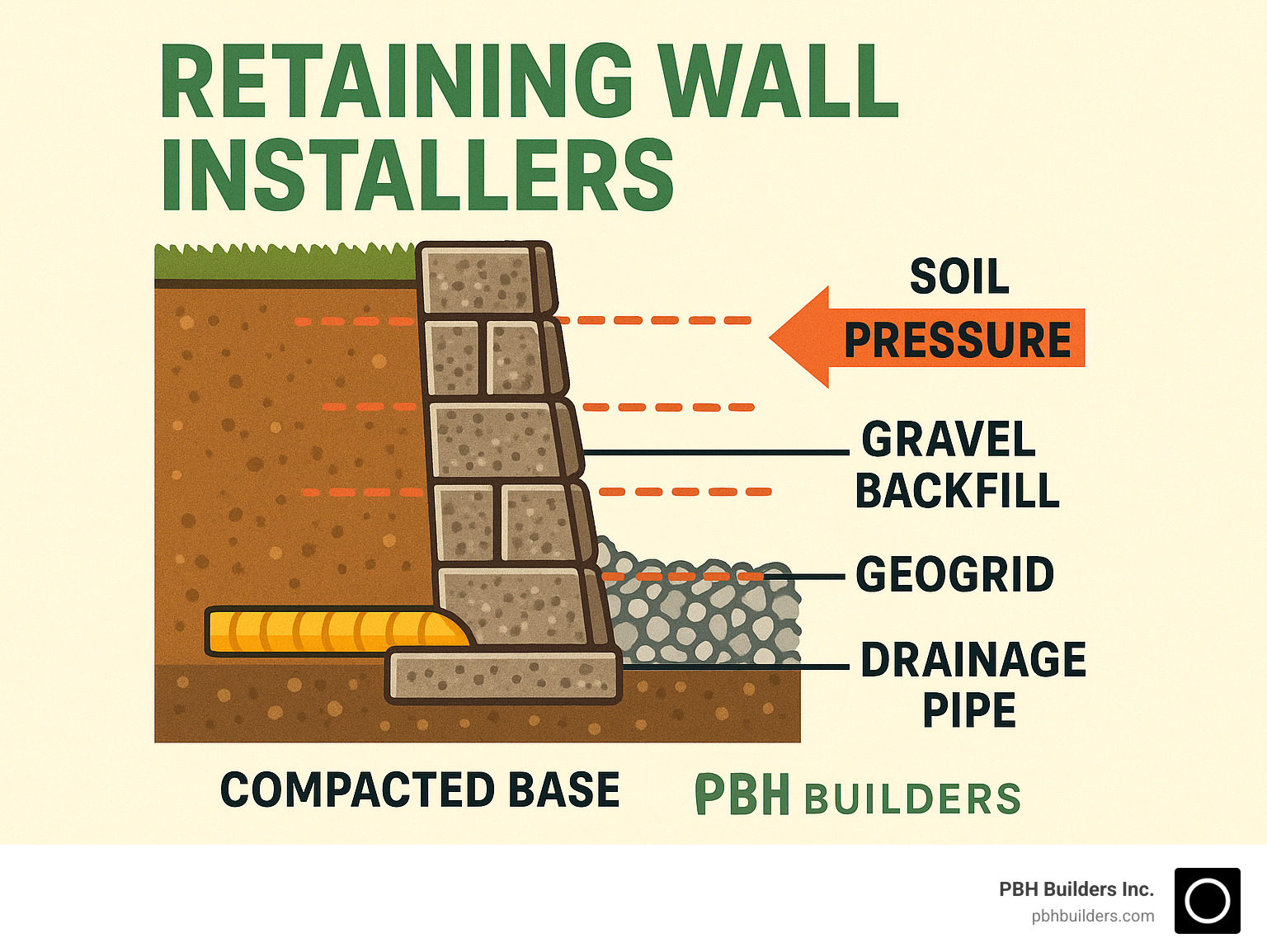
The process begins with a consultation and site assessment to understand your vision and goals. Our team then examines soil conditions and water movement to identify potential challenges.
During the design phase, we create detailed plans that account for both aesthetics and the immense pressure from the soil. Walls over four feet tall often require engineered designs to ensure long-term stability.
Excavation and foundation preparation are critical. We dig a trench proportioned to the wall’s height, typically needing an 8.5-inch deep foundation for a 2.5-foot wall. This trench is filled with compacted gravel to create a solid, level platform.
The base course installation sets the stage for the entire wall. This first layer must be perfectly level and aligned to ensure the structure is straight and stable.
Drainage systems are essential to prevent hydrostatic pressure buildup, a common cause of wall failure. We install perforated drainpipes in gravel behind the wall, along with weep holes, to allow water to escape safely.
For taller walls, geogrid reinforcement acts as an anchor, extending into the soil to create a “reinforced soil mass.” This engineering technique dramatically increases the wall’s strength.
Backfilling and compaction are done in layers as the wall is built. We use granular materials like gravel and compact each lift to prevent future settling.
The final step is adding capstones and finishing work. These protect the wall from water penetration from above and provide a polished look. We leave your property clean and ready to enjoy.
Most concrete retaining wall installations in San Diego take one to two weeks. You can see the results of this careful process in our Retaining Wall Project Example. A properly built wall will stand strong for decades.
Finding and Vetting Professional Retaining Wall Installers
Finding the right retaining wall installers is crucial for a successful project. Choosing an unqualified contractor can lead to costly repairs or safety issues. The expertise required goes far beyond basic landscaping skills.
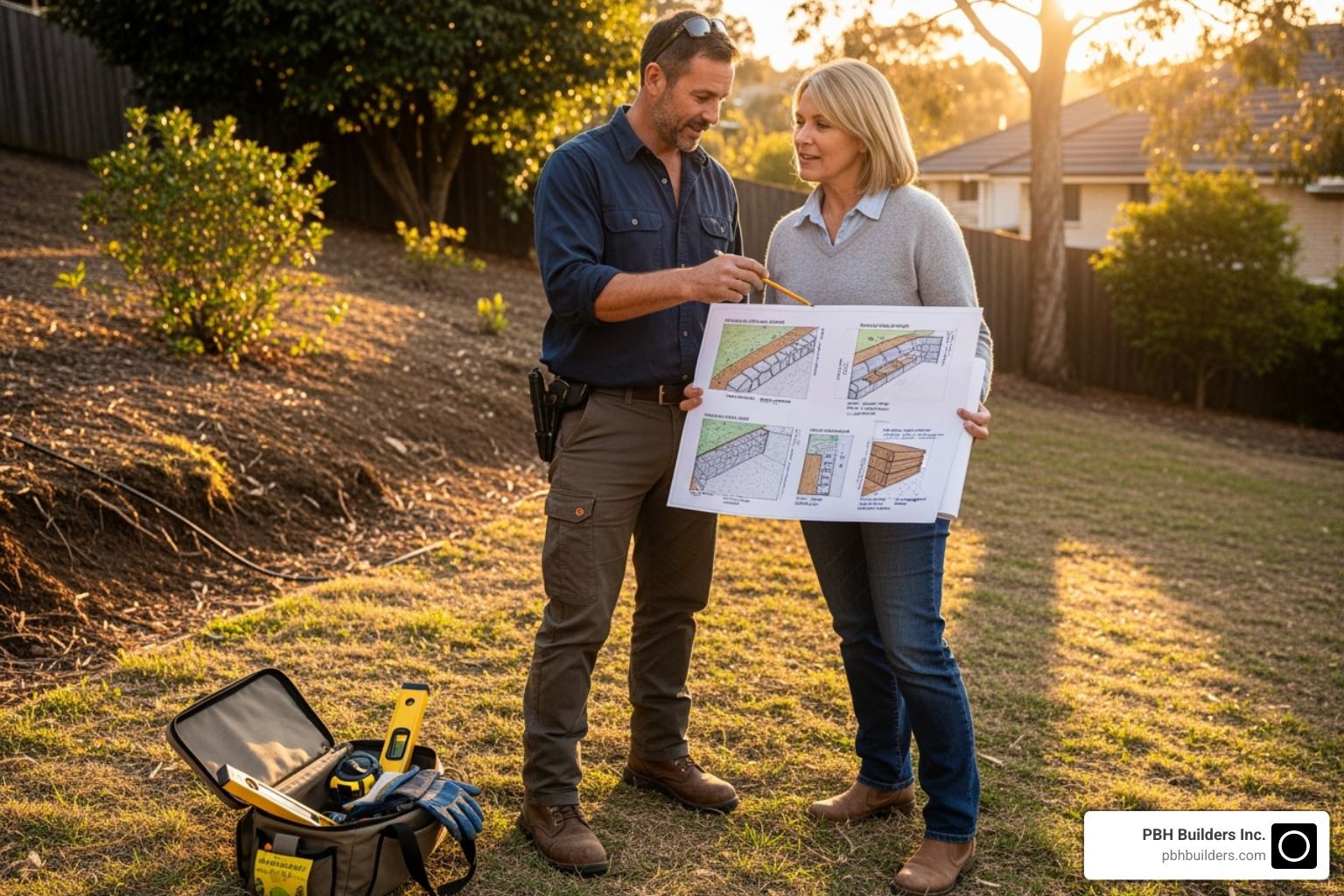
What to Look for in Professional Retaining Wall Installers
Start by verifying proper licensing and insurance. The best contractors carry comprehensive liability and workers’ compensation coverage, which protects you from financial responsibility for accidents.
Experience matters in retaining wall construction. Look for contractors with 10-15 years in the business who have completed projects similar to yours.
A strong portfolio showcases a contractor’s capabilities. When reviewing their Retaining Wall Projects, check for material variety, craftsmanship, and an aesthetic that matches your vision. Ask to see older projects to assess durability.
Customer testimonials and reviews on platforms like Angi or Google offer insight into a contractor’s professionalism, communication, and quality of work.
Local San Diego experience is vital. A contractor familiar with our region’s soil, seismic risks, and building codes will build a wall that lasts.
Always insist on written estimates and clear contracts detailing costs, labor, timelines, and warranties. Be wary of vague verbal quotes.
Look for specialty certifications, such as Belgard Preferred Contractor status, which indicate advanced training and a commitment to best practices.
Questions to Ask Your Contractor
Prepare thoughtful questions to assess a contractor’s expertise.
- Project timeline: How long will the project take? An experienced contractor can provide a realistic schedule.
- Material sourcing: Where do they source materials? Can they provide options within your budget?
- Warranty coverage: What does the warranty cover, for how long, and what are the exclusions? Quality contractors stand behind their work.
- Drainage plan: How will they prevent water buildup? They should explain their system of drains, weep holes, and backfill material in detail.
- Permit requirements: Your contractor should know local San Diego regulations and handle the permitting process if required.
For larger projects, consider working with established General Contractors in San Diego who can coordinate all aspects of your landscape renovation. The cheapest bid isn’t always the best value. Quality retaining wall installers invest in the right equipment, labor, and materials to ensure your wall performs for decades.
Your Retaining Wall Investment: Cost, Care, and Longevity
A retaining wall is a long-term investment in your property’s function and value. Understanding costs, care, and signs of trouble will help you protect that investment.
How Much Do Retaining Wall Installers Charge?
Retaining wall costs depend on several factors. Understanding them helps you make informed decisions for your budget.
- Material selection is the biggest cost driver. Natural stone costs more upfront than concrete blocks but may last much longer.
- Labor rates in San Diego typically run between $50 to $100 per hour for a skilled two-person crew. Experienced installers may charge more, but their expertise reduces errors and ensures a durable wall.
- Size and complexity affect pricing. A simple, straight wall is less expensive than one with curves, planters, or integrated lighting.
- Site accessibility impacts labor costs. If crews cannot easily bring in equipment, costs will be higher.
- Soil conditions like rocky terrain or heavy clay can increase excavation and preparation time.
- Engineering plans and permits are often required for walls over 4 feet tall, adding to the cost but ensuring safety and compliance.
Get detailed written estimates from multiple qualified contractors. Be cautious of quotes that seem too good to be true—they often are.
Signs Your Wall Needs Repair
Even well-built walls need check-ups. Catching issues early prevents costly repairs. Look for these red flags:
- Leaning or bulging: This indicates serious pressure buildup or foundation failure and requires immediate professional attention.
- Cracks: While tiny hairline cracks are common, large, continuous, or stair-step cracks signal structural stress.
- Water issues: Persistent dampness, white powdery deposits (efflorescence), or water seeping through the wall point to drainage problems.
- Sinking or shifting: If sections of the wall are settling or moving, the foundation may be compromised.
- Soil erosion: If soil is washing away from the base or top of the wall, it’s not performing its primary function.
If you spot these issues, call experienced retaining wall installers for an assessment.
Essential Maintenance for Lasting Walls
Retaining wall maintenance is generally straightforward.
- Regular inspections: Walk along your wall a few times a year, especially after heavy rain, to check for any changes.
- Keep drainage clear: Ensure weep holes and drainage pipes are free of leaves and debris so they can function properly.
- Monitor water flow: Water should drain away from the wall, not pool near it. Address any new drainage problems promptly.
- Wood walls need annual attention with quality wood preservatives or sealants to prevent rot and insect damage.
- Concrete walls benefit from periodic sealing every few years to protect against moisture penetration and staining.
- Manage vegetation: Avoid planting aggressive or water-loving plants near the wall, as roots can cause damage.
With proper care, your retaining wall will improve your property for years to come.
Frequently Asked Questions about Retaining Walls
Homeowners often have similar questions about retaining walls. Here are answers to the most common ones.
How long do retaining walls last?
The lifespan of a retaining wall depends on the material, installation quality, and maintenance.
- Stone retaining walls are the most durable, lasting 50 to 200 years with proper construction.
- Poured concrete and concrete block walls are also excellent choices, typically lasting 50 to 100 years or more when properly reinforced with good drainage.
- Wood retaining walls have a much shorter lifespan of 10 to 20 years, as they are susceptible to decay and insects.
Proper installation by skilled retaining wall installers and consistent maintenance are the most critical factors. A poorly built wall can fail in a few years, regardless of the material.
What is the cheapest type of retaining wall?
Treated pine typically comes in as the most affordable option at around $250 per square meter. However, we encourage clients to consider long-term value.
Concrete blocks offer a great balance for many San Diego homeowners, providing durability and design flexibility at a more moderate price point than stone.
When comparing costs, remember to factor in longevity. A treated pine wall may need to be replaced multiple times in the lifespan of a single concrete block wall. Installation complexity can also affect the final price, which is why detailed estimates are so important.
Do I need a permit to build a retaining wall in San Diego?
Yes, you will likely need a permit, especially if your wall meets certain criteria.
- Height restrictions: Walls over 3 to 4 feet tall almost always require a permit.
- Location: Proximity to property lines or existing structures can trigger permit requirements.
- Surcharge loads: If the wall supports a driveway or patio, a permit is necessary.
San Diego’s building codes exist for safety, accounting for our seismic activity and soil conditions. Engineered plans are often required for taller walls, and while there are fees and surcharges, they are an essential part of ensuring a safe, stable structure.
We recommend consulting with us early in your planning process. We are familiar with San Diego’s requirements and can guide you through the permitting process to ensure your project is compliant from the start.
Transform Your Landscape with Expert Installation
As we’ve explored, the right retaining wall installers are crucial for a project that improves your property for decades.
A professional installation transforms how you experience your outdoor space. An unusable slope can become terraced gardens, and erosion problems disappear. You gain functional, beautiful space for relaxing or entertaining, all while increasing your property value.
Professional expertise means understanding San Diego’s unique soil, designing effective drainage, and navigating local building codes. This is the difference between a wall that fails and one that stands for generations. A retaining wall is a long-term investment; stone retaining walls can last 50 to 200 years, but only when built correctly.
Our Outdoor Living Spaces often use retaining walls as foundational elements to define and improve the entire area. Whether you envision a fire pit carved into a hillside or cascading terraced gardens, the right wall makes it possible.
For homeowners in San Diego, the expert team at PBH Builders Inc. provides comprehensive design and installation services. Our commitment to creativity, expertise, and detail ensures your retaining wall creates new opportunities for outdoor living.
Ready to transform your challenging slope? Let’s build a beautiful, durable space together with professional Retaining Wall Installation that stands the test of time.
